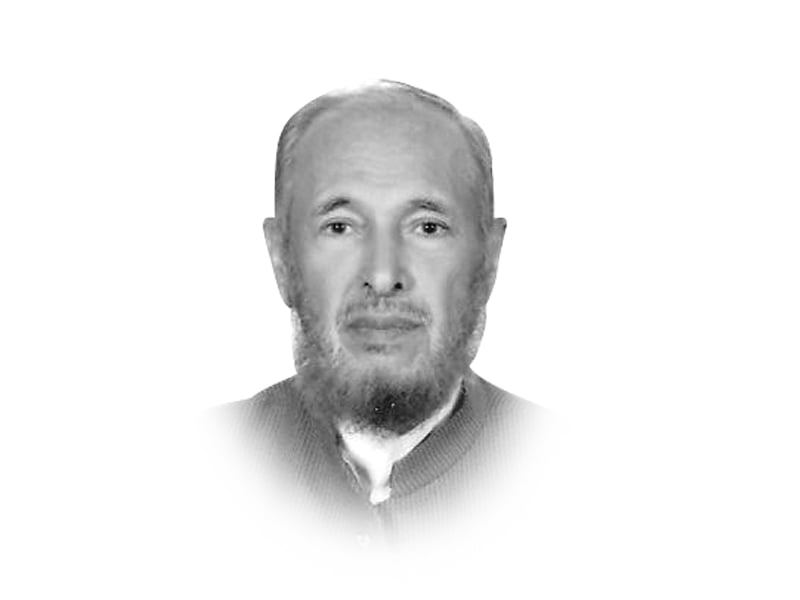
Prime Minister Imran Khan paid a daylong visit — his first since taking office — to Kabul, Afghanistan, on November 19. He held wide-ranging talks with Afghan President Ashraf Ghani. The visit took place in the backdrop of increased violence along the border between the two countries and the spike in attacks inside Afghanistan by both the Taliban and Daesh causing a large number of mostly civilian casualties across the country. A further element of uncertainty has been added to the rapidly deteriorating security environment in the country by President Trump’s announcement to withdraw more forces from the war-ravaged country by January 15 next year. That would leave only 2,500 American troops in the country in addition to some “contractor” forces already deployed. The most ominous development however is the continuing deadlock in talks between the representatives of the Afghan government and the Taliban in Doha, Qatar.
The visit was intended to “reduce the trust deficit” that continues to haunt and inhibit the growth of cordial relations between the two countries. It was also meant to seek a common ground on the most contentious issues that block progress towards reconciliation in the Doha peace talks.
The interaction has obvious benefits in that it helps promote mutual understanding so that the two countries would begin to appreciate each other’s stance on vital issues. But such high-level contacts have been the hallmark of the troubled relations between the two countries. Former Afghan president Karzai carried out as many as 21 state visits to Pakistan in his tenure of 12 years. But did these really break the ice in ushering a new era of mutual cooperation and respect for the positions each country takes on important issues?
The symbolism of the visit is also important. This could lead to a gradual reduction in the deep distrust that currently affects relations. But if there is no progress on real issues the apparent warmth and cordiality soon fades out.
As expected, President Ghani urged Prime Minister Imran to pressure the Taliban to agree to a ceasefire — a longstanding focus of attention of the Afghan government. In return, Imran offered to do “whatever he can” to persuade the Taliban to reduce violence and agree to a ceasefire. In other words he assured Ghani to leverage Islamabad’s influence to help bring about a cessation in hostilities so that the peace talks could make progress.
This really did not mean much in actual terms because the Taliban’s position has been consistent and unambiguous — if the Pakistani leadership would try to understand their position. The reality is that Pakistan’s influence over the Taliban has limits. The group does listen to Islamabad’s advice because many of its leaders’ families continue to reside in Balochistan. But on an issue that is critical to the whole Taliban movement i.e. a ceasefire, the Taliban would take their own decision. Simply put the Taliban argue that any ceasefire — if it does not deliver — could prove costly because once the cadres stop fighting, they lose motivation and making them fight again is nearly impossible. Secondly, they also realise that any acceptance of a ceasefire could imperil the unity of the movement. It could lead to divisions and that would be suicidal. Talking then of “urging both sides to reduce violence” may sound rational and logical but there are grave implications which are often overlooked.
The Afghan government is in a desperate situation. It realises that any rapprochement with the Taliban would inevitably cause those currently at the helm to cede space and control. In other words, any durable settlement would require Ghani and his coterie of ministers and advisers to make room for a new transitional government They are not prepared to accept that eventuality. That explains why the Kabul government has been creating one obstacle after another to prolong the talks. The deadlock suits them as long as the United States and the international community continue their financial assistance — the backbone of a regime that only controls less than half of the country’s territory. Continuance of the status quo ensures that the government leaders remain in the saddle no matter what the cost.
From this perspective, the visit has achieved very little. There has been no tangible outcome as far as the most critical issue is concerned. Meanwhile the Doha peace talks have virtually come to a standstill. The stalemate could only be broken if there is a real solid pressure by the US administration on the Ghani government to accept the ground realities and agree to the formation of a broad-based, multi-ethnic government of which the Taliban would be an important component.
Some other issues came up for discussion like the extension of the railway line to Afghanistan, the removal of hurdles in the way of trade, the attacks from across the border. But the issue of sharing waters of the Kabul River was not raised even though it is of such grave importance to the peoples of both countries. Both countries are severely water-stressed and need to develop mechanisms to ensure waste of water is handled firmly and both the upper and downstream riparians get their share of water. That can only happen when the two countries reach an agreement on sharing of Kabul River water.
Issues of diminishing trade, Afghans facing problems in crossing over into Pakistan for meeting relatives, education, medical treatment and business must be addressed and resolved soon before they cause further rupture in the ties between the two countries. Imran’s visit must be followed by a deeper and constructive engagement that stresses the value of recognising and addressing the core issues — mainly in the realm of peace making. But the Pakistani policymakers must try to understand the real causes of the deadlock in the crucial peace talks currently being held in Doha.
Published in The Express Tribune, November 24th, 2020.
Like Opinion & Editorial on Facebook, follow @ETOpEd on Twitter to receive all updates on all our daily pieces.


1732102112-0/BeFunky-collage-(77)1732102112-0-165x106.webp)









COMMENTS
Comments are moderated and generally will be posted if they are on-topic and not abusive.
For more information, please see our Comments FAQ